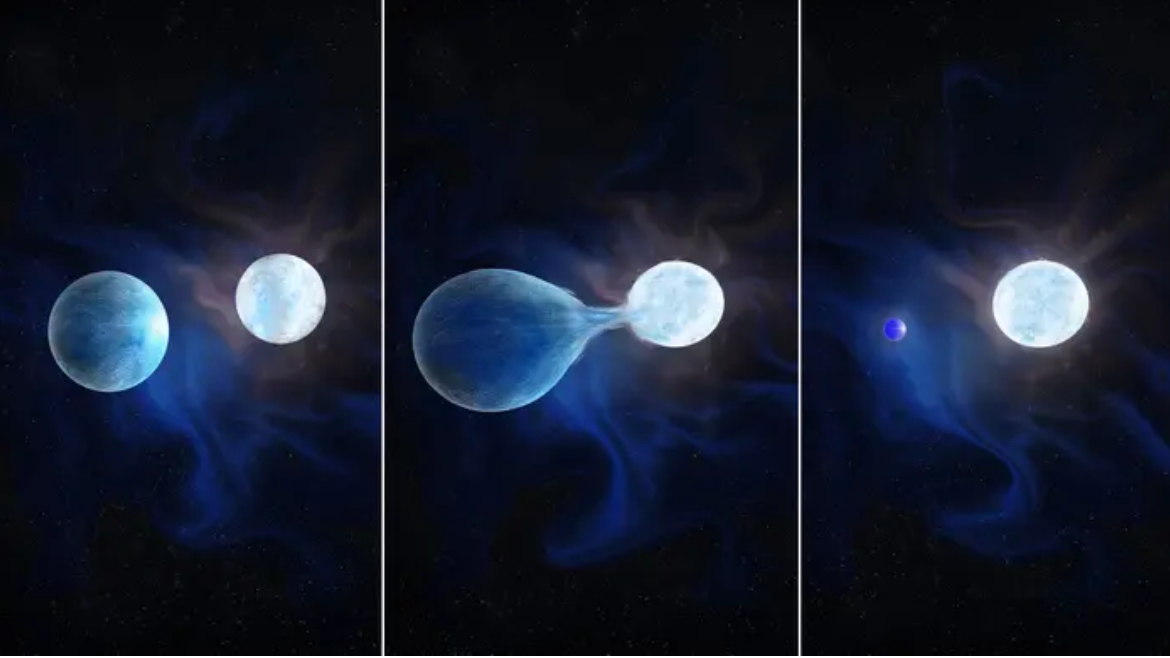
The universe teems with systems of two stars orbiting each other in a seemingly endless cosmic dance. Scientists have long hypothesized that one out of three massive stars in these binaries have their hydrogen envelopes ripped off by its companion star, in turn, creating a hot helium star.
Observing these types of stars is rare; only one was previously identified. Now, researchers have found a whole population of these stars in the Large and Small Magellanic Clouds, relatively nearby satellite galaxies of the Milky Way. The finding may give insight into hot helium stars, which are thought to be the start of neutron star mergers and hydrogen-poor core-collapse supernovae. The study was published this month in Science.
“Our work sheds light on these fascinating relationships, revealing a universe that is far more interconnected and active than we previously imagined,” says Bethany Ludwig, a PhD candidate at the University of Toronto and coauthor of the study, in a press release. “Just as humans are social beings, stars too, especially the massive ones, are rarely alone.”
Stripped stars
Astronomers are invested in learning about hydrogen-poor core-collapse supernovae because they do not fully understand their origins. Some suspect that these stellar explosions form from stars so massive that their outer hydrogen envelopes are stripped by cosmic winds. Others think the explosion begins with binary stars. In this scenario, one of the stars pulls the hydrogen envelope away from the other companion star. The process can take hundreds of thousands of years, per a press release. When the companion star pulls off the envelope completely, all that’s left is a hot helium core. The star’s life will then end in a hydrogen-poor supernova.
Computer models suggest that a third of massive stars in the universe would experience this stripping, but scientists have only observed one example of a stripped star. Stripped stars are hard to spot because their light is extremely dim. Surrounding dust can hide the light, or their companion star can overshadow them.
“If it turned out that these stars are rare, then our whole theoretical framework for all these different phenomena is wrong, with implications for supernovae, gravitational waves, and the light from distant galaxies,” says Maria Drout, lead author of the study and an astrophysicist at the University of Toronto. “This finding shows these stars really do exist.”
On a search
The research team started looking for the elusive stars in 2016. Drout and her collaborators used data from the Neil Gehrels Swift Observatory to survey stars visible only in the ultraviolet part of the spectrum. The team then observed 25 stars and with the twin Magellan Telescopes, located at Las Campanas Observatory in Chile. The team collected data in line with predictions that the stars are low mass, hydrogen-poor, and exist in binary systems.
Stripped stars in this newfound population may end their lives in a supernova blast or a neutron star merger. Researchers will continue observing these stars and looking for others within the Milky Way and other nearby galaxies.









